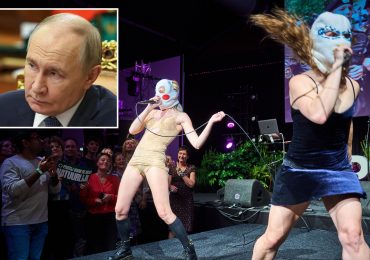KYIV, Ukraine — The U.S. has removed restrictions on the transfer of American weapons and training to a high-profile Ukrainian military unit with a checkered past, the State Department said on Tuesday.
The move will help the Azov Brigade, among Ukraine’s most effective and popular fighting units, move beyond its reputation as a far-right movement, a perception its commanders have been trying to dispel as Russian propaganda.
[time-brightcove not-tgx=”true”]
The State Department applied the Leahy vetting process to the Azov Brigade, which has been absorbed into Ukraine’s National Guard as the 12th Special Forces Brigade. U.S. laws prohibits providing providing equipment and training to foreign military unit or individuals suspected of committing gross human rights violations. The State Department found “no evidence of Gross Violations of Human Rights (GVHR) committed by the 12th Brigade Azov,” according to a statement.
“This is a new page in our unit’s history,” the Azov Brigade wrote in a statement on Instagram. “Azov is becoming even more powerful, even more professional and even more dangerous for occupiers.”
“Obtaining western weapons and training from the United States will not only increase the combat ability of Azov, but most importantly, contribute to the preservation of the lives and the health of personnel,” the statement said.
Up until the State Department’s decision, a provision in the U.S. appropriations law prohibited the Azov from sending fighters to Western military exercises or access weapons bought with American funds. Lifting the ban will likely bolster the brigade’s fighting capacity at a difficult time during the war against Russia’s invasion. Ukraine suffers from persistent ammunition and personnel shortages.
In the years since Russia’s full-scale invasion in February 2022, the brigade has tried to recast its public image away from the controversy surrounding its ultranationalist origins to that of an effective and skillful fighting force.
Azov soldiers played a key part in the defense of Mariupol, holding out in a siege and low on ammunition for weeks at the southern port city’s steel mill despite devastating attacks from Russian forces. In Ukraine they are hailed as heroes, remembered for defense of the sprawling plant that became a symbol of Ukrainian tenacity in the war against Russia, and people take to the streets for weekly rallies calling for the release of hundreds of Azov POWs who remain in Russian captivity for two years now.
Moscow has repeatedly portrayed the Azov as a Nazi group and accused it of atrocities, but has publicly given no evidence. In 2022, Russia’s top court officially designated Azov a terrorist group.
The brigade grew out of a group called the Azov Battalion, formed in 2014 as one of many volunteer brigades created to fight Russia-backed separatists in eastern Ukraine. The battalion drew its initial fighters from far-right circles.
While its current members reject accusations of extremism and any ties with far-right movements, the Kremlin has seized on the regiment’s origins to cast Russia’s invasion as a battle against Nazi influence in Ukraine.
Leave a comment







